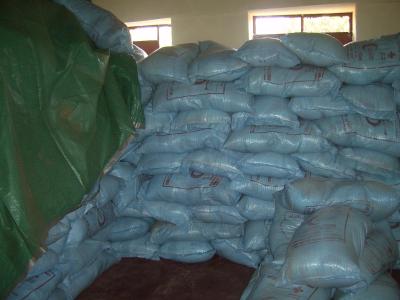in general i have the feeling that the people who live off art (usually not artists - who more often than not do not live off their work) are so bored with real life that they need the borderline experience of art to somehow feel alive. the immediate analogy that comes to my mind is good old Karl Marx and his "opium of the people". whereas he was referring to religion, i see parallels to my recent experiences of the "art" world.
i subsitute "religion" with "art" - and, at least to me, Marx' words offer a lucid analysis of the cult of art. today's bourgoisie (the people i have in mind here) flocks to art exhibitions with the same grim determination as it did attend church some time ago. in the face of obstruse objects sanctified by art priests nobody dares utter the relieving and revealing words: "this is bullshit!" because this would be the disqualification from the congregation of the enlightened.
„Das Fundament der irreligiösen Kritik ist: Der Mensch macht die Religion, die Religion macht nicht den Menschen. Und zwar ist die Religion das Selbstbewusstsein und das Selbstgefühl des Menschen, der sich selbst entweder noch nicht erworben, oder schon wieder verloren hat. Aber der Mensch, das ist kein abstraktes, außer der Welt hockendes Wesen. Der Mensch, das ist die Welt des Menschen, Staat, Societät. Dieser Staat, diese Societät produzieren die Religion, ein verkehrtes Weltbewusstsein, weil sie eine verkehrte Welt sind. Die Religion ist die allgemeine Theorie dieser Welt, ihr enzyklopädisches Compendium, ihre Logik in populärer Form, ihr spiritualistischer Point-d'honneur (Ehrgefühl), ihr Enthusiasmus, ihre moralische Sanktion, ihre feierliche Ergänzung, ihr allgemeiner Trost- und Rechtfertigungsgrund. Sie ist die phantastische Verwirklichung des menschlichen Wesens, weil das menschliche Wesen keine wahre Wirklichkeit besitzt. Der Kampf gegen die Religion ist also mittelbar der Kampf gegen jene Welt, deren geistiges Aroma die Religion ist.
Das religiöse Elend ist in einem der Ausdruck des wirklichen Elendes und in einem die Protestation gegen das wirkliche Elend. Die Religion ist der Seufzer der bedrängten Kreatur, das Gemüth einer herzlosen Welt, wie sie der Geist geistloser Zustände ist. Sie ist das Opium des Volks.
Die Aufhebung der Religion als des illusorischen Glücks des Volkes ist die Forderung seines wirklichen Glücks. Die Forderung, die Illusionen über seinen Zustand aufzugeben, ist die Forderung, einen Zustand aufzugeben, der der Illusionen bedarf. Die Kritik der Religion ist also im Keim die Kritik des Jammertales, dessen Heiligenschein die Religion ist. “
– Karl Marx: Einleitung zur Zur Kritik der Hegelschen Rechtsphilosophie; in: Deutsch-Französische Jahrbücher 1844, S. 71f, zitiert nach MEW, Bd. 1, S. 378-379
(see
http://de.wikipedia.org/wiki/Opium_des_Volkes)
morino - 21. Jun, 14:44

